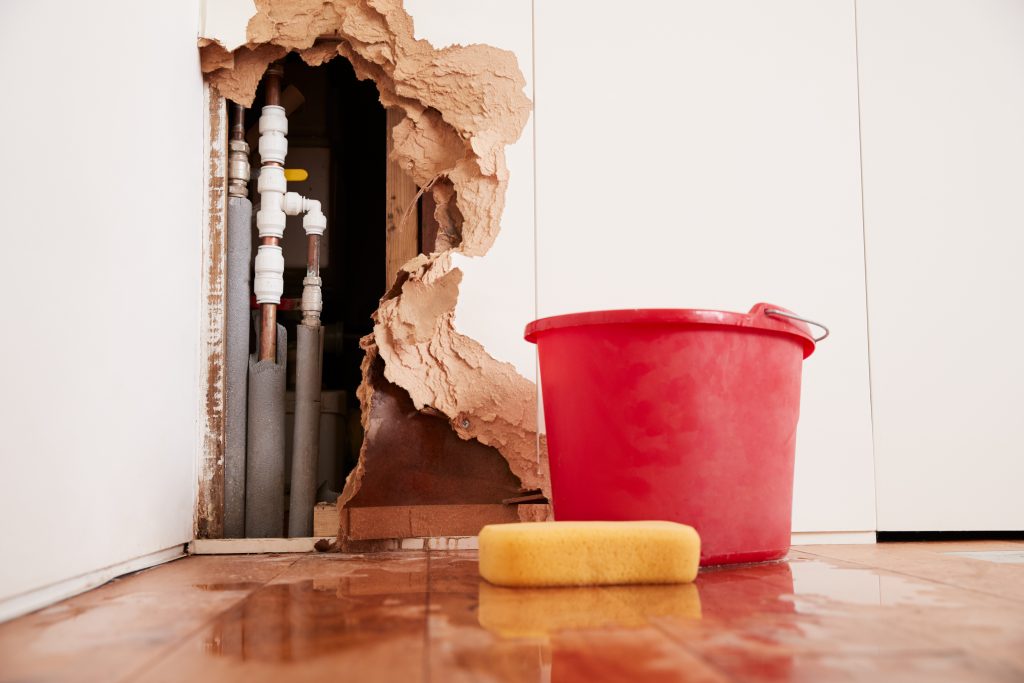Guide To Water Leakage Discovery In Your Home
Guide To Water Leakage Discovery In Your Home
Blog Article
Do you find yourself looking for guidance about Detecting hidden plumbing leaks?

Early detection of leaking water lines can reduce a prospective disaster. Some small water leakages might not be noticeable.
1. Check Out the Water Meter
Every house has a water meter. Checking it is a guaranteed way that assists you find leakages. For beginners, switch off all the water resources. Ensure no one will flush, use the faucet, shower, run the washing machine or dishwashing machine. From there, go to the meter as well as watch if it will change. Because nobody is using it, there ought to be no movements. That indicates a fast-moving leakage if it relocates. Furthermore, if you identify no changes, wait a hr or 2 as well as inspect back once again. This indicates you may have a slow-moving leak that might also be underground.
2. Inspect Water Consumption
If you find abrupt modifications, despite your usage being the same, it indicates that you have leaks in your plumbing system. An unexpected spike in your bill suggests a fast-moving leak.
A constant increase every month, also with the very same practices, reveals you have a slow leak that's likewise gradually escalating. Call a plumber to completely examine your building, especially if you really feel a cozy area on your floor with piping beneath.
3. Do a Food Coloring Examination
When it concerns water usage, 30% originates from toilets. Examination to see if they are running properly. Drop specks of food shade in the container and also wait 10 minutes. There's a leakage in between the container and also dish if the shade in some way infiltrates your bowl during that time without flushing.
4. Asses Outside Lines
Do not fail to remember to check your exterior water lines also. Must water seep out of the link, you have a loosened rubber gasket. One small leak can waste bunches of water and also surge your water bill.
5. Evaluate as well as Evaluate the Situation
Home owners ought to make it a habit to examine under the sink counters as well as even inside cupboards for any bad odor or mold and mildew growth. These 2 red flags show a leakage so prompt focus is required. Doing regular evaluations, also bi-annually, can conserve you from a major issue.
More significantly, if you know your home is already old, keep a watchful eye on your heating systems, hoses, pipes etc. Look for discolorations and also damaging as most pipes as well as appliances have a life expectancy. They will certainly also naturally degrade due to tear and also wear. Don't wait for it to intensify if you believe leaking water lines in your plumbing system. Call an expert plumber right now so you do not wind up with a terrible mess in your home.
Early discovery of dripping water lines can minimize a possible disaster. Some tiny water leaks may not be visible. Inspecting it is a guaranteed means that aids you uncover leakages. One little leakage can waste tons of water and spike your water expense.
If you think leaking water lines in your plumbing system, don't wait for it to escalate.
WARNING SIGNS OF WATER LEAKAGE BEHIND THE WALL
PERSISTENT MUSTY ODORS
As water slowly drips from a leaky pipe inside the wall, flooring and sheetrock stay damp and develop an odor similar to wet cardboard. It generates a musty smell that can help you find hidden leaks.
MOLD IN UNUSUAL AREAS
Mold usually grows in wet areas like kitchens, baths and laundry rooms. If you spot the stuff on walls or baseboards in other rooms of the house, it’s a good indicator of undetected water leaks.
STAINS THAT GROW
When mold thrives around a leaky pipe, it sometimes takes hold on the inside surface of the affected wall. A growing stain on otherwise clean sheetrock is often your sign of a hidden plumbing problem.
PEELING OR BUBBLING WALLPAPER / PAINT
This clue is easy to miss in rooms that don’t get much use. When you see wallpaper separating along seams or paint bubbling or flaking off the wall, blame sheetrock that stays wet because of an undetected leak.
BUCKLED CEILINGS AND STAINED FLOORS
If ceilings or floors in bathrooms, kitchens or laundry areas develop structural problems, don’t rule out constant damp inside the walls. Wet sheetrock can affect adjacent framing, flooring and ceilings.
https://www.servicemasterbyzaba.com/blog/how-to-detect-water-leakage-in-walls/

As a fervent person who reads about Detecting hidden plumbing leaks, I think sharing that piece of content was important. If you enjoyed reading our blog posting kindly be sure to pass it around. I cherish reading our article about Locating water leaks.
Report this page